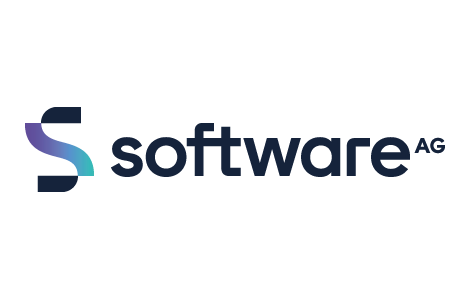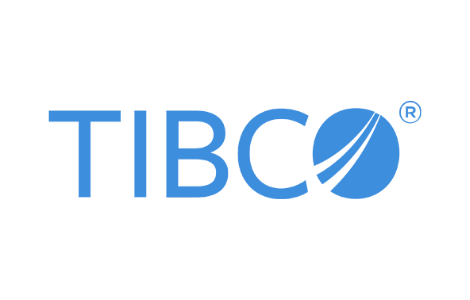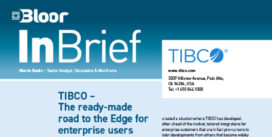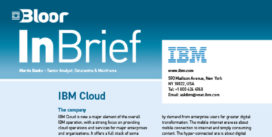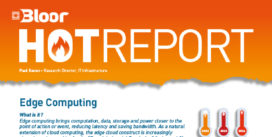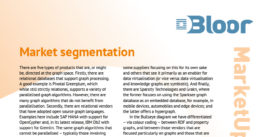Edge Computing
Last Updated:
Analyst Coverage: Paul Bevan, David Norfolk, Martin Banks and David Terrar
Edge computing brings computation, data, storage and power closer to the point of action or event, reducing latency and saving bandwidth. What this means, simply, is that you process, reject and display information close to where you use it and only send results over the network to the centre for further processing and storage if necessary, As a natural extension of cloud computing, the edge cloud construct is increasingly viewed as a key enabler for the “Fourth Industrial Revolution” (Industry 4.0) in which the widespread deployment of the Internet of Things (IoT), global interconnected business eco-systems and increasingly agile software defined manufacturing, deliver unprecedented communication-driven opportunities with massive economies of scale.
Why is it important?
Back in 2014 the European Green Paper on M-Health estimated that IoT and, by implication, Edge Computing, could produce savings of around 7% on EU health spending. Based on 2019 figures this equates to an actual saving of €68.81 billion a year. A 2016 PwC survey of over 2000 executives in 26 countries about Industry 4.0 revealed potential annual digital revenue growth of 2.9%, with a significant minority that expect revenue increases of more than 50% over 5 years. At the same time the respondents expected to see average cost savings of 3.5% a year. This equates to savings of $493 billion a year, for the next 5 years.
While there are varying estimates of the overall impact of Industry 4.0, and there remain challenges around its implementation from a cultural and organisational perspective, there is little argument about the need. One of the main drivers for Industry 4.0 adoption is IoT. From 11.7 billion connected devices in 2020 there are a range of predictions, from 25-42 billion connected devices by 2025. Importantly, IDC estimate that 79.4 Zettabytes of data will also be generated by 2025. Those organisations that understand how to use IoT, and other enabling technologies, will derive benefits from genuine digital transformation and the ability to envision and implement new business models. Bloor sees this as a key element of becoming a Mutable enterprise.
Edge computing, along with Software Defined Networking (SDN), the global ubiquity of smart phones, 5G mobile technology, and IoT platforms and frameworks, are key enablers for Industry 4.0. Without these there will be network problems, not only in providing connectivity for billions of IoT devices, but also in transferring and processing the huge volumes of data that will be generated. The problems are not just about bandwidth. Different IoT solutions will have different network requirements. Some devices, like autonomous vehicles and medical equipment demand absolute reliability where low latency will be critical. Other use cases will see networks having to cope with a much higher density of connected devices than seen from traditional 4G networks. Edge Computing is important because it delivers the ability to process some, or all, transactions, and store data near to the source of that data, i.e. at the Edge and will be a key determinant of the success of Industry 4.0.
Out at the edge, data items will get smaller, and tasks will often revolve around microservices locally processing small sets of these small data items together, at high speed, to generate appropriate-time status and change-of-state monitoring, and reports that are then acted upon locally. These will be performed by small, localised compute resources, increasingly incorporated inside the monitoring devices and/or housed in secure micro data centres. They will run operating systems specifically designed to work with cloud services, utilising applications dynamically loaded via containers and operating systems designed to work across widely distributed domains.
There will also be a shift away from general purpose processor chips to purpose-designed processing units. It will soon become difficult to tell the difference between a `processing sensor’ and a `sensing processor’, for that <function> `+processor’ model will become ubiquitous across limitless individual forms and applications requirements.
Edge Computing will radically change the role of some data centres away from the central position of it being the lynchpin holding everything together, towards becoming, mainly, the repository of the metadata of what is happening, and where it is happening across the business, plus the final results of much of the processing work carried out elsewhere. The `elsewhere’ will be widely dispersed around – indeed dissolved throughout – the global network where the work, physically or logically, is being done. It will be increasingly granular in nature, where the difference between a `sensor’ or `machine’ and a compute node will be increasingly difficult to tell and will, in effect, cease to be important.
With this dispersal of processing to the edge, customer-facing employees at the periphery will become more important, politically, and the influence of the IT organisation and the data centre may well decline.
Organisations will flatten. Reduced latency and increased responsiveness are likely to change usage patterns and this will require existing capacity management projections to be reviewed.
To make Edge Computing work at the scale envisaged, there will be on-going developments across distinct technology categories. These include secure, small footprint datacentres, new, small form factor servers and storage devices, edge cloud platforms to provide the agility, scalability and resilience of virtualised environments, SDN And NFV (Network Function Virtualisation) to enable the most effective use of networks and, above all else, high levels of automation to enable remote management and dark operations, i.e. without local IT operations staff.
According to a 2015 McKinsey Report IoT has a total potential economic impact of $3.9 trillion to $11.1 trillion a year by 2025. Early adopters have already moved to implement IoT projects and gain significant business benefits. While there seems to be some reluctance to share the actual financial returns, which may be holding back adoption by others seeking assurance, there is a growing body of evidence that points towards significant productivity gains. Hand and Power Tool manufacturer, Stanley Black & Decker reported a 10% increase in staff productivity on a project to fully connect a production line with IoT sensors, RFID tags and wireless networks. European retailer, C&A implemented IoT sensors in their stores and logistics centre to monitor and control energy usage. They achieved 20% savings in their stores and 35% in their logistics centre. The logistics centre savings alone contributed €50,000 per annum to their bottom line. ISS, one of the world’s leading facility services companies uses internet connected boxes in their UK based vehicles to monitor and control driver behaviour and productivity in real-time. This ensures compliance with government regulations on usage and has resulted in a 36% reduction in overtime payments.
There isn’t an industry immune to the impact of IoT. From Connected Cows delivering step change improvements in insemination productivity, to JCB’s Livelink connected equipment programme that delivers 95% uptime on construction equipment through early problem detection and more effective planned maintenance, through to health monitoring for the elderly at home that reduces unplanned hospital admissions, IoT projects are already delivering significant benefits and bringing forth new business models.
What next?
Business leaders need to actively investigate how IoT can help deliver a step change in productivity and open up new business opportunities. Don’t wait, run IoT pilot projects now that can take advantage of existing data processing, data storage, wireless and mobile network capabilities.
At the same time consideration will have to be given to what data is held, where and for how long, the scale and nature of data processing required and implications for wireless bandwidth, coverage, density and latency. Business CIOs and CTOs need to be working with mobile network and wireless equipment vendors to upgrade existing wireless networks and ensure they can take advantage of emerging 5g network capabilities. Software defined networking (SDN) is an essential element of these developments and CIOs and CTOs should be ensuring that NFV is built into any network upgrades.
At the same time a review of data centre strategy will be needed that reflects the need for increased high-performance compute requirements for machine leaning and big data analytics and the strong likelihood of the need to provision significant data processing at the network edge.
Revolutions are by their nature disruptive. They create winners and losers. Businesses need to be implementing Edge Computing capabilities that will support the rapidly increasing number of IoT
devices and deliver enhanced data analytics and automation at the edge, wherever that might be, to win in the 4th Industrial Revolution.
What is the bottom line? The implementation of Edge computing that supports the needs of IoT and other edge functionality, is fundamental to unlocking the revenue growth and costs savings promised by Industry 4.0.
Edge Computing, as we have described it is, in itself, an emerging trend. But there are some key developments which are worth noting.
With networks becoming more complex, more distributed and more public in nature, we envisage an increase in the use of managed edge networking services that wrap existing network contracts and architectures in with new edge network requirements using SD-WAN (software defined wide area networks) incorporating access control, data encryption and network security in a SASE (secure access service edge) compliant mode.
Challenges exist in providing standardised development and deployment of new edge-based applications. There is an emerging market for Edge Platform-as-a-Service solutions. The market is at an early stage of development and adoption, and we expect to see the emergence of a few key players, using common standards, to help speed the growth of new edge applications.
There is increasing interest in how and where AI (Artificial or Augmented Intelligence) can be used at the edge. This has implications for compute architecture in edge locations, with a knock-on concern around power, cooling and remote management capabilities. We expect to see more use of modular, secure micro-datacentres replacing existing local server room set ups.
We are seeing evidence to suggests that an early, hot favourite application is going to be Device Management – being able to see and know what those billions of IoT devices are doing. Also, in the whole retail supply chain and beyond, – where individual consumers or staff are themselves parts of the edge, there is a growing focus on human latency sensitive applications.
Most of the major IT companies such as IBM, HPE, VMWare, Dell and Cisco have a strategic focus on, and offerings in, Edge Computing. Importantly, they all have significant integration and implementation capabilities which will be a key requirement for widespread enterprise adoption
IoT PaaS (platform as-a-servce) vendors will have a major impact on market development. Some, like Siemens and PTC Thingworks have an OT (Operational Technology) heritage. There are newer companies who are IoT (Internet of Things) natives, such as Particle and Thingstream. And it is interesting to note other widely differing vendors like Software AG and AWS also coming to market with solutions.
Telcos clearly have strong interest in edge computing and a key role to play. Major telcos such as Vodafone, Telefonica and T-Mobile stress their enterprise solutions alongside their more visible consumer based, public edge, initiatives.
Given the complexity and challenges of new edge networking requirements, vendors, including Cloud Gateway, Cato Networks, Cloudflare, Netscope and Palo Alto Networks are offering SASE compliant platforms.
We shouldn’t forget the whole raft of startups that are targeting specific areas where new solutions will have a place, such as new, `lite’ operating systems, capable of operation across a wide range of different hardware (especially relevant to Industry 4.0 where there is widespread use of sensors etc. built to many incompatible proprietary standards.
Finally, for now, there needs to be a continuing focus on the underlying physical infrastructure. Some of the more far-sighted data centre infostructure vendors like Schneider Electric have a very sophisticated view of, and well-developed product, like modular micro-datacentres, for the Edge Computing market. Similarly, there are vendors of date centre space and power, like EdgeConneX and vapor.io developing very specific and innovative edge offerings.
Commentary
Solutions
These organisations are also known to offer solutions:
- ARM
- AWS
- Canonical
- Cato Networks
- Cloudflare
- Dataracks
- Dell
- EdgeConnex
- EE/BT
- Fortinet
- HPE
- Intel
- Kalray
- Netscope
- Nvidia
- Oracle
- Palo Alto Networks
- Panduit
- Particle
- Proximity Data Centres
- PTC
- Qualcomm
- Rittal
- Samsung
- Scale Computing
- Schneider Electric
- Siemens
- Stultz
- T-Mobile
- Telefonica
- Thingstream
- Vapor.io
- VMware Carbon Black
- Vodafone
- Zscaler




